In 1990 Americans John Sylvain and Peter Dragone invented the K-Cup, a single use coffee pod filled with ground coffee, used in their Keurig Green Mountain (formerly Keurig) coffee machines.
Even though this was not the first coffee pod, it set a worldwide trend, has dominated the coffee retail market in North America, and now has an impressive 20 percent market share in the United States.
Today coffee pods and capsules are one of the many mono use items commonly found in many households, and feature in one-third of American and British homes.
However, even Sylvain no longer uses his own product, which was initially targeted at offices, and today shows remorse for inventing it in the first place. The German city Hamburg has gone even further and banned coffee pods from all its council buildings.
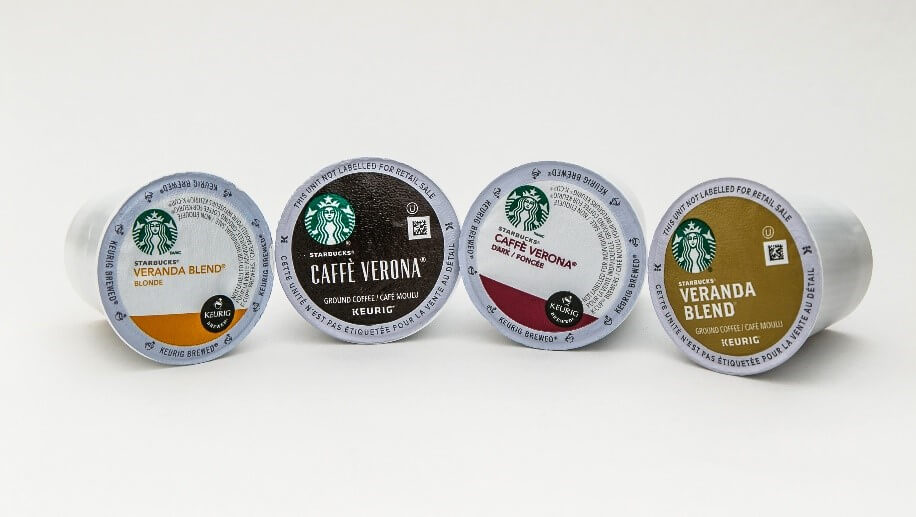
How come?
The pods were designed for convenience, but not for the environment.
In 2015 research showed that the annual amount of coffee pods produced by Keurig alone could circle the Earth 10.5 times, not to mention all the other brand pods. You can read about Keurig’s journey to sustainable packaging here.
Don’t worry, this article is not going to try to convince you to get rid of your beloved Nespresso, Tassimo, or Lavazza single serving coffee machine or multiple flavour coffee pod and capsule collection!
That said, almost all the coffee pods currently available on the market are fully recyclable.
Therefore, I would like to make you aware of what impact your morning cup has to the environment if not disposed correctly, and to offer some environmentally friendly coffee pod alternatives and practical tips to drinking guilt free pod coffee.
Coffee pod supply chain
The manufacturing of a coffee pod is very lengthy process that starts with growing coffee trees and collecting the coffee beans in countries near the equator, commonly nicknamed “coffee belt”, such as Costa Rica, Peru, Java, and Myanmar.
The next step is transporting the beans to a country of distribution and processing them in a roastery. Empty pods and outer packaging made of cardboard and plastic are manufactured, and once the product is assembled, it’s transported to distribution warehouses and retail outlets.
As you can see, due to the complex supply chain, the coffee pod has a big strain on the environment even before it is disposed.
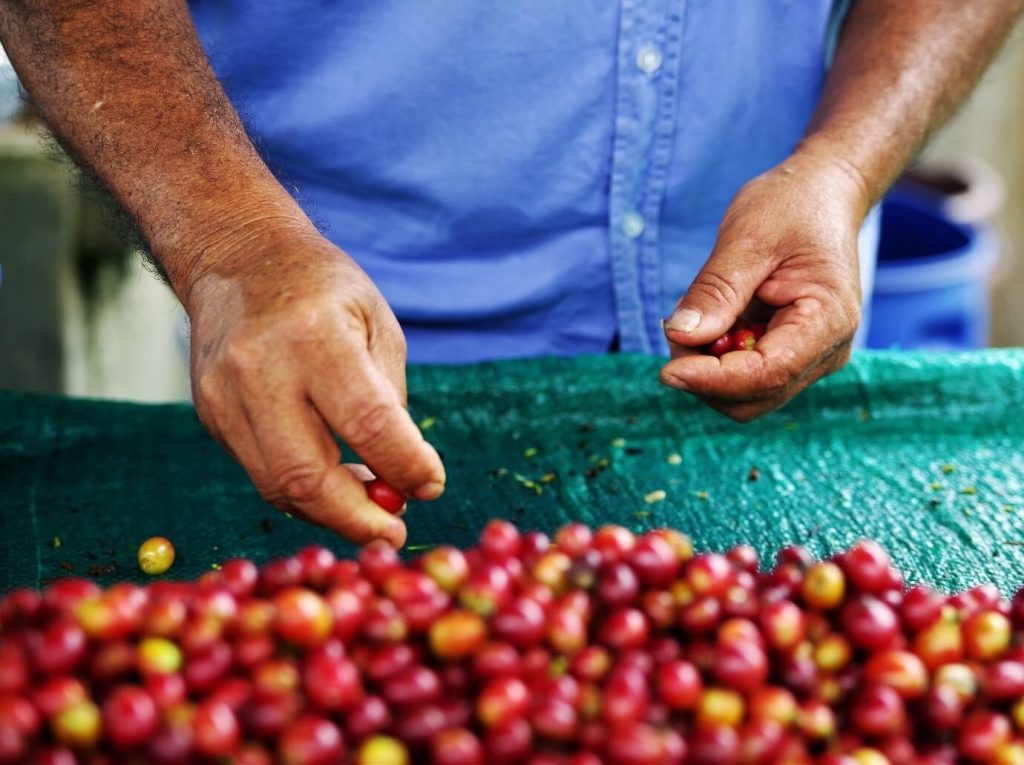
Coffee pod life cycle
Depending of the manufacturer, the average coffee pod consists of plastic and/or aluminium packaging, and coffee grounds.
Each individual element is usually recyclable and compostable; however, it requires prior separation. Aluminium parts require shredding and re-smelting (applying heat), the varnish is burnt, and coffee grounds removed with water.
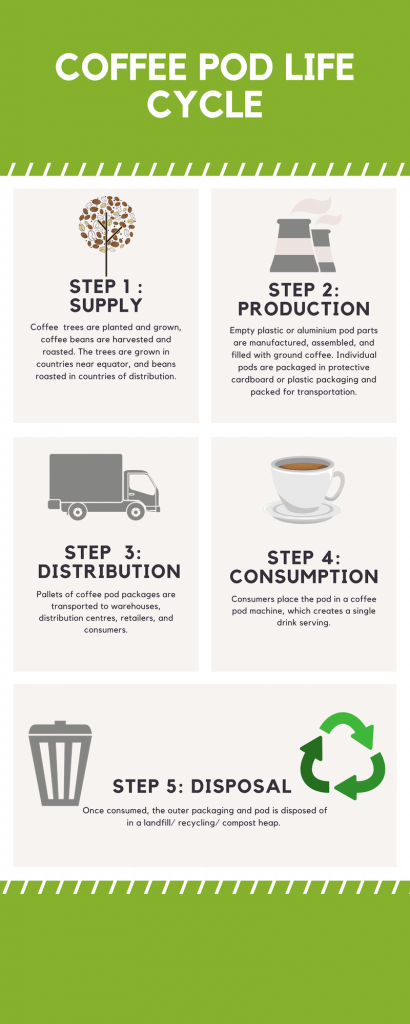
The use of energy and transportation is a high price for a convenience; not to mention that the non-recycled pods end up in landfill, where it takes 150 to 500 years to break down.
According to Jan Dube from the Hamburg Department of Environment and Energy, the pods are the reason for “unnecessary resource consumption and waste generation” and “should not be bought with taxpayers’ money”. Not only the used coffee pods pollute the environment, the complex supply chain leaves a carbon footprint and is partially responsible for the global heating.
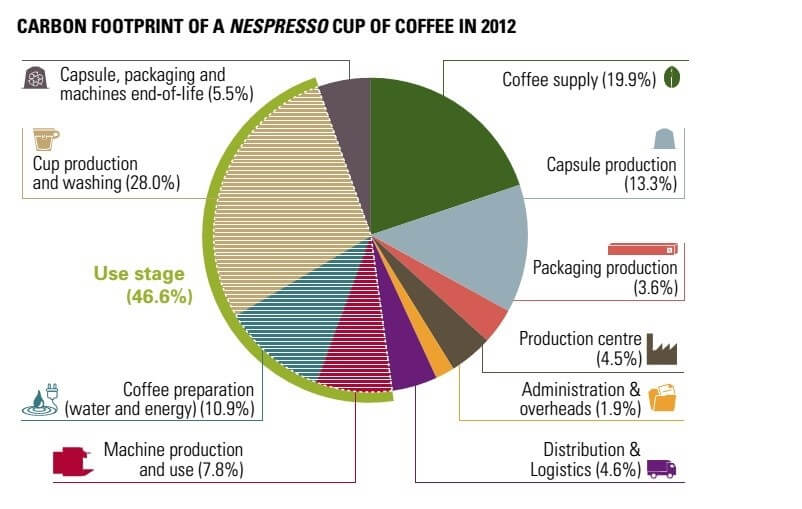
Recycling programs
If you are not ready to part ways with your caffeine pods, investigate your coffee maker’s recycling incentives.
Coffee companies are tackling the issue by testing different packaging materials, inventing biodegradable pods and capsules, and teaming up with recycling companies.
TerraCycle is one of them, a recycling company founded in the United States, that motivates joe lovers to send in their used Tassimo coffee pods, covers their postage fees, and shreds the used coffee pods.
A similar program is set up by Nespresso, which has been the go-to coffee pod for many since George Clooney became the face of the brand in 2006.
The Swiss corporation has a very detailed sustainability plan and has put in place a system of returning used aluminium pods in their stores, mailing them to a recycling partner CollectPlus, or having the used pods picked up from your home.
CollectPlus works with other coffee makers such as Nescafe. Pods can be further recycled into plastic furniture such as decking, fencing, and garden seats.
On the downside, neither Nespresso nor any other big coffee brand has disclosed what percentage of coffee pods get recycled, leading me to suspect that recycling is not covering the damage that coffee pods are doing to our planet.
Compostable options
When it comes to compostable options, there is a lot of confusion about biodegradable plastic and bioplastic.
The former is a normal plastic with added chemicals that help it break down faster, however, it is not suitable for compost and breaks down into a mixture of chemicals that remain in the soil.
The latter however consists of corn or potato starch, sugar or wheat, and decays into the soil (with the help of heat and UV light).
Eden Project, a Cornwall based unique environmental preservation project, has its own coffee brand exclusively available at Waitrose supermarkets.
Eden project has created compostable capsules, that are compatible with Nespresso coffee machines. The organic coffee pods decompose into raw materials in a matter of weeks.
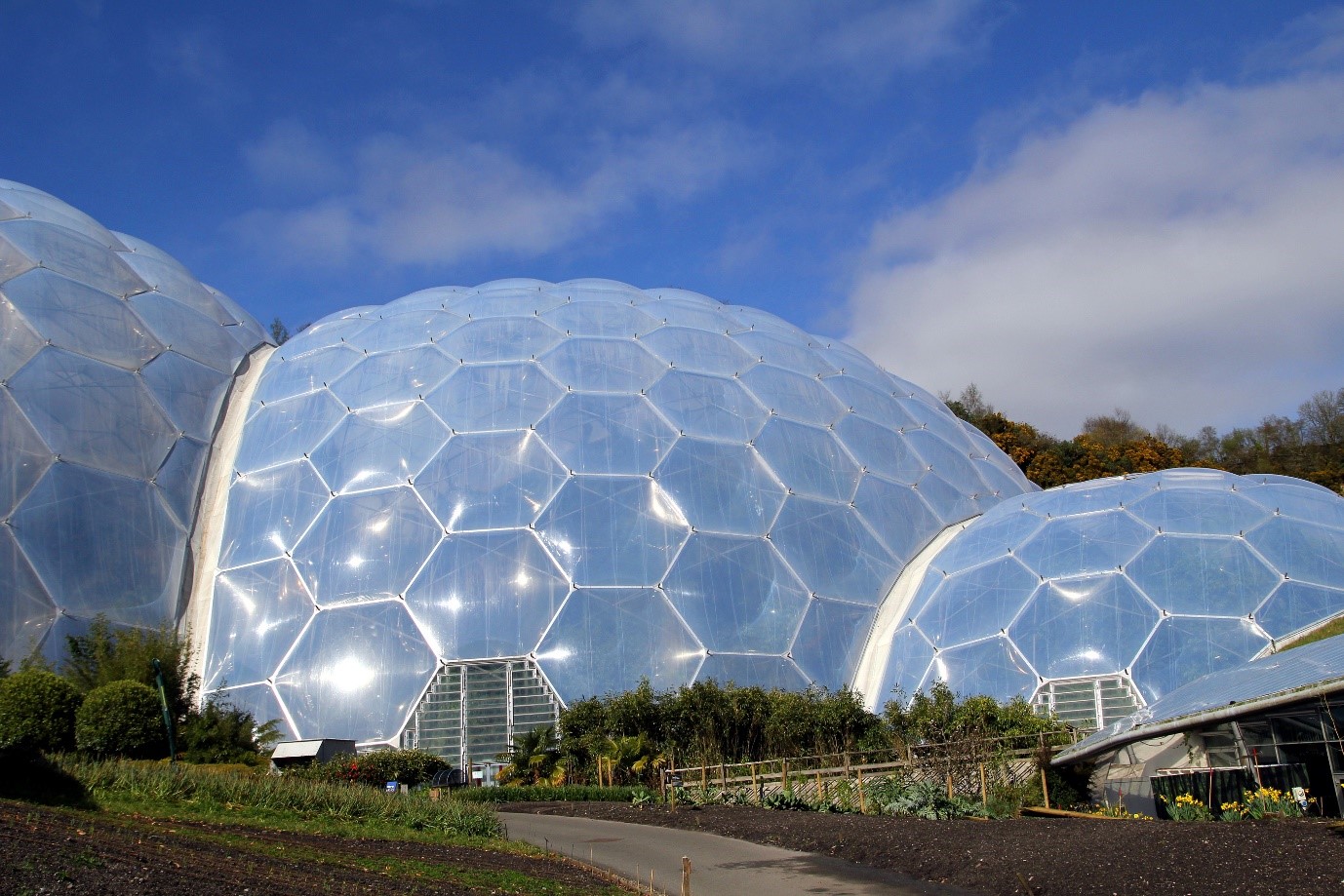
Providing a delicious brew and material for your domestic compost heap, these coffee pods don’t contribute to landfills.
The capsules are made from biodegradable bioplastic and produced with energy from wind, sun, hydropower, and biogas, meaning that it does not contribute to the global heating.
Overall, compostable pods are still made mostly by smaller and independent coffee roasters, but big brands are getting on the bandwagon and testing their compostable versions.
If you decide to give compostable coffee pods a go, keep in mind they have a shorter shelf life. Read instructions for appropriate storage, so they don’t deteriorate too quick.
Reusable pods
An alternative solution to throwing out used capsules every day is choosing reusable coffee pods. Reusable coffee pods can be refilled with ground coffee and resealed therefore saving plastic waste.
Numerous online retailers are offering refillable coffee pod and capsule kits consisting of a reusable pod, a scoop for measuring the quantity needed, and biodegradable paper filters.
Such systems are compatible with most of the mainstream coffee machines like Nespresso, Nescafe, and Tassimo.
This is an eco-friendly way to drink coffee at the small expense of a few minutes of assembling the DIY coffee pod.
Choose the option most suitable for you and drink it from an environmentally friendly coffee cup.
Let us know in the comments below how you drink your coffee and if you’re planning on creating an at home coffee compost heap.

Your article says that Coffee companies are teaming up with recycling companies, includng
TerraCycle, “a recycling company founded in the United States, that motivates joe lovers to send in their used Tassimo coffee pods, covers their postage fees, and shreds the used coffee pods.” Problem is, Terracycle’s program(me) is only available in Great Britain. We are getting rid of our Tassimo because we’re tired of trying to recycle those un-reusable bar-coded pods. Until Tassimo or an affiliate comes up with a reasonable way to recycle the Tassimo pods, we will not use Tassimo products.